<- previous index next ->
There may be an application where a 3D object is needed as
a group of smaller objects of the same shape, that together
make the original object.
One application is subdividing a 3D object into many small
volumes for solving a partial differential equation by the
finite volume method, FVM.
Another application is subdividing the surface of a 3D object
into smaller surface elements to get a smoother 3D printed
object.
tetra split example
The first example is tetra_split1.
Given a .dat file with a single tetrahedron, generate
another .dat file that has smaller tetrahedrons that
when connected together make the original tetrahedron.
A tetrahedron is a 4 sided 3D object. Each of the four
sides is a triangle. The .dat file has 4 vertex of the
tetrahedron and the four triangles using the vertex.
( from tetra2.dat
4 4
0.000000 0.000000 0.000000
1.000000 0.000000 0.000000
0.500000 0.866000 0.000000
0.500000 0.433000 0.866000
3 1 2 4
3 2 3 4
3 3 1 4
3 1 2 3
)
The splitting program tetra_split1.java has a crude diagram
of the added vertex to make the smaller tetrahedron:
4 input: 4 triangles
/\ 1 2 4
/ |\ * 11 center 1 2 4
/ | \ 2 3 4
7 * | * 10 midpoint 3 1 4
/ 6 | \
/__*__|__ _\ output 12 tetrahedrons
1 \ | / 3 1 5 6 7 not drawn.
\ *9 / 2 8 9 5 Each written
\ | / 3 10 6 8 as 4 triangles
5 * | * 8 4 7 9 10 in .dat file.
\ |/ 5 6 7 11
\/ 8 9 5 11
2 10 6 8 11
7 9 10 11
5 7 9 11
8 9 10 11
6 7 10 11
5 6 8 11
See tetra2sp.dat
tetra_split1.java program
tetra_split1_java.out output
tetra2.dat input file
tetra2sp.dat output file
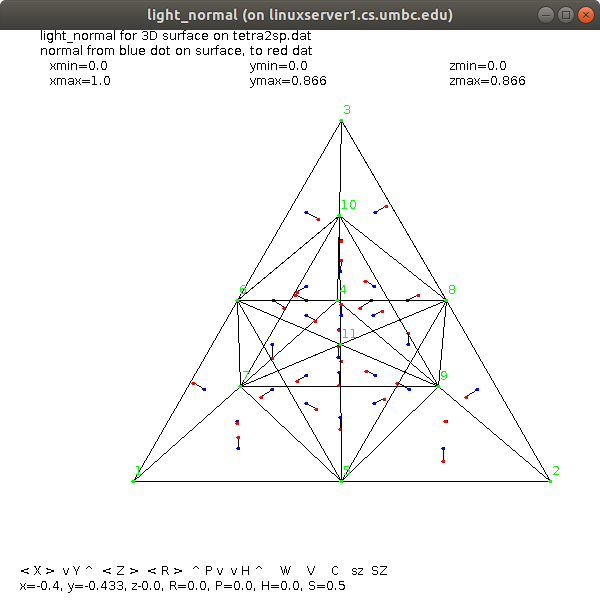 Resulting tetrahedrons, 4 triangles each, that fill the original
tetrahedron.
Measurement of regular tetrahedron area and volume are shown in
tetra_split.java source code
tetra_split_java.out output
volume_tetra.py3 source code
volume_tetra_py3.out output
Resulting tetrahedrons, 4 triangles each, that fill the original
tetrahedron.
Measurement of regular tetrahedron area and volume are shown in
tetra_split.java source code
tetra_split_java.out output
volume_tetra.py3 source code
volume_tetra_py3.out output
tri_split example
This example splits each 2D triangle into 4 triangles.
tri_split.java plot 3d data Utah graphics .dat
split every triangle into 4 triangle
ip1 np1 ip2
*---+---*
\1/4\2/ * initial points
np3 +---+ np2 + new points at edge center of initial triangle
\3/ four triangles replace initial triangle
* remember, in utah .dat ip and np are +1 of subscript
ip3
tri_split1.java program
datread.java used
datwrite.java used
tri_split.dat input data
tri_split2.dat output data
star4_tri.dat output data
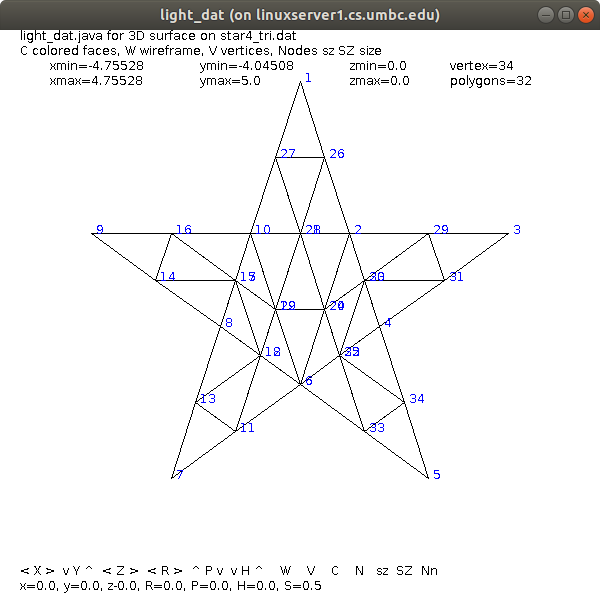
sphere_div example
This example splits the triangles that cover the surface of a sphere.
Applications include getting better graphics of a sphere and
3D printer .stl files that produce smoother surface spheres.
sphere_div.java program
datread.java used
datwrite.java used
sphere_div2.dat result
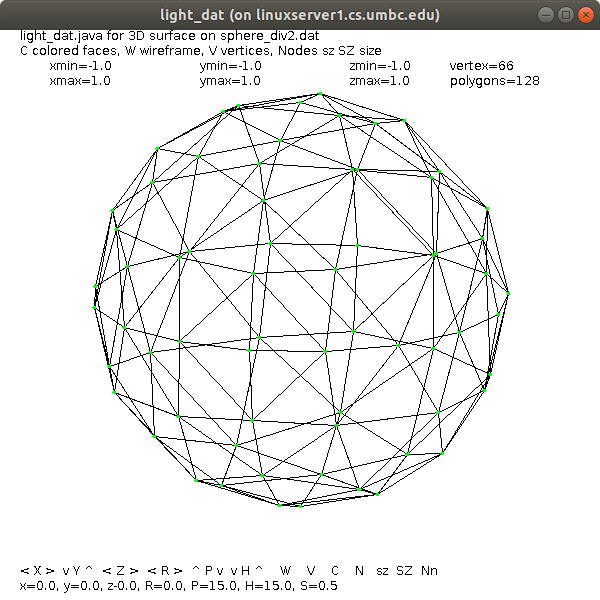 sphere_div3.dat result
sphere_div3.dat result
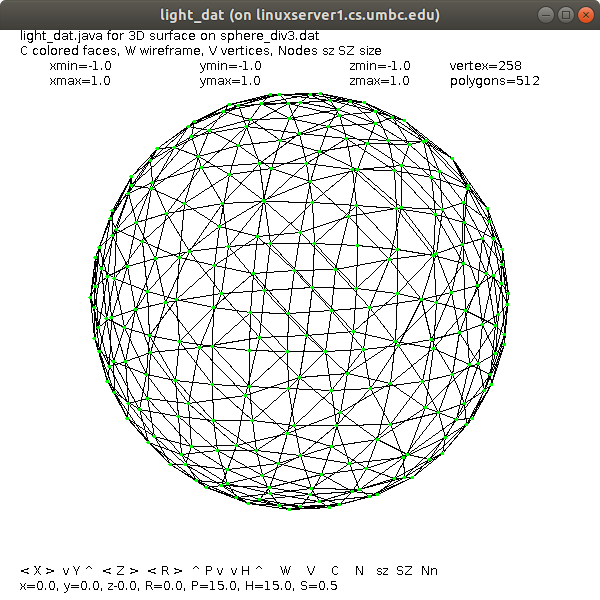 sphere_div4.dat result
sphere_div4.dat result
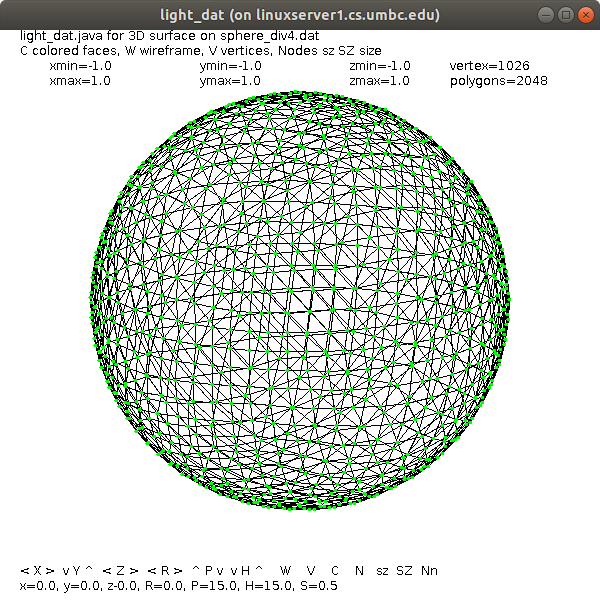
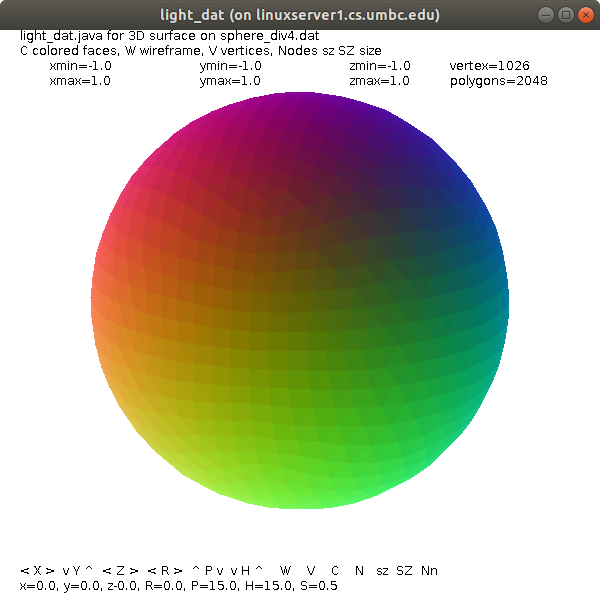
<- previous index next ->
Many web sites on Java GUI, AWT, Swing, etc.
Many web sites on Python wx, tk, qt, etc.
 Resulting tetrahedrons, 4 triangles each, that fill the original
tetrahedron.
Measurement of regular tetrahedron area and volume are shown in
tetra_split.java source code
tetra_split_java.out output
volume_tetra.py3 source code
volume_tetra_py3.out output
Resulting tetrahedrons, 4 triangles each, that fill the original
tetrahedron.
Measurement of regular tetrahedron area and volume are shown in
tetra_split.java source code
tetra_split_java.out output
volume_tetra.py3 source code
volume_tetra_py3.out output

 sphere_div3.dat result
sphere_div3.dat result
 sphere_div4.dat result
sphere_div4.dat result

